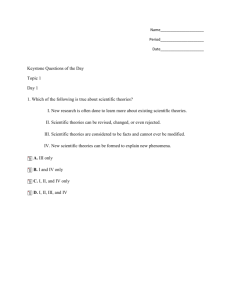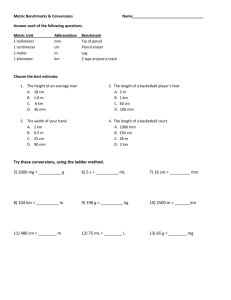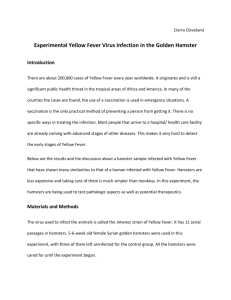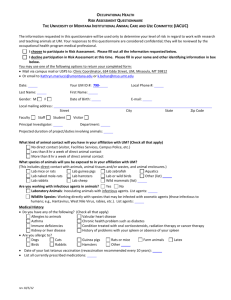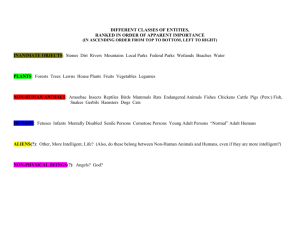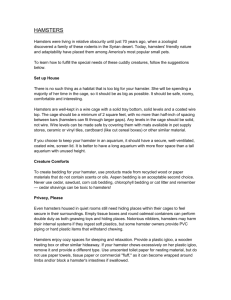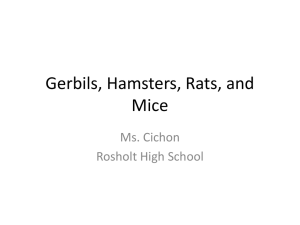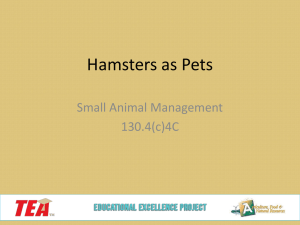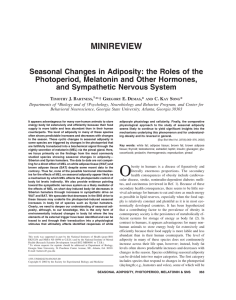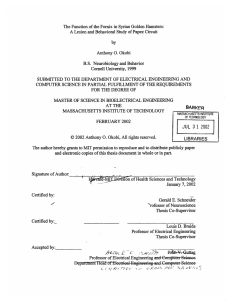hamsters - Glen Rose FFA
advertisement
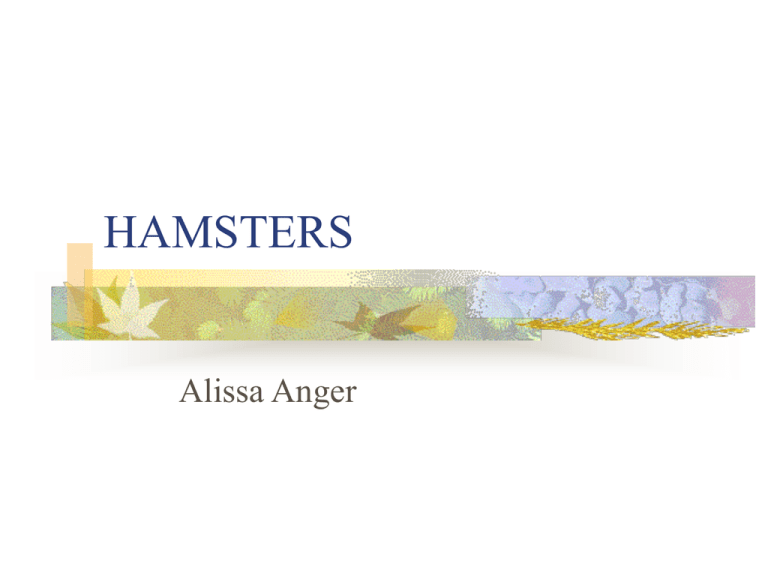
HAMSTERS Alissa Anger Syrian Hamster (Mesocricetus auratus) Muridae -family Rodentia –order includes other common rodents such as gerbils, rats, mice, guinea pigs and chinchillas Hamsters weigh about 4 ounces 5 to 6 inches temperature not much above 80 F…. WHY? below 50 F? What happens? GROUPS/BREEDS Hamsters were first used for medical research. Tame- Pets Hamsters are native to the Middle East, Europe and Asia. Syrian or Golden hamster is the most common. Breeds (cont) #2~~ dwarf hamster (Phodopus sungorus) Common colors include: black, yellow, silver grey, light grey, rust and cinnamon. Markings include banded patterns and speckled or piebald patterns. Breeds Dwarf hamsters can be brownish-grey, opal, black, sooty grey-brown and albino. HOUSING and EQUIPMENT Spacious easy to clean built to prevent escapes (gnaw-proof) Basic Equipment needed: Cage Floor cover/bedding Food dish Water dispenser 10 to 19 square inches of cage floor space per animal CAGES standard wire commercial cage an aquarium with wire mesh lid homemade construction. Cages should be at least 10 inches by 16 inches by 10 inches in height. Equipment Water dispensers (bottles) are hung on the outside of cages with the drinking tube extended into the cage. If water bottles are hung inside of the cage, they need to be protected from gnawing by the hamster. Bedding Floor coveringcomfortable place to dwell and also absorbs urine. Bedding is used for nesting purposes. (wood chips BEST not Cedar, newspaper, cardboard, tissues,cotton) Hamsters are a nesting animal and require a material they can use to build a nest. TOYS Hamsters are very active animals, but they are nocturnal. Nocturnal- They sleep during the day and move at night. Need Toys!!! Exercise Wheel Wooden ladder Seesaws Merry-go-round Wooden branches and twigs Sand box NUTRITION Feeding hamsters a nutritious diet is an important factor in keeping them healthy. Hamsters are omnivores, eating both plants and meat But they can grow and thrive on a herbivorous diet eating only vegetables. Food Hamsters' nutritional needs are best met through commercially prepared pellets. Pellets contain the recommended levels of protein, fat, fiber, energy, vitamins and minerals. FEEDING (con’t) Hamsters eat about a tablespoon of pellets daily A small amount of vegetables or fruit should also be fed each day. Treats!!! Some example of supplemental foods include: Apples, Carrots, Parsley, Peas, Spinach, Bananas, Broccoli, Corn on the Cob, Nuts, Cheese, Dog Biscuits/Pellets, Bread, Raisins, Crickets, Potatoes, Rice, Pasta Chicken, and Bean sprouts. Coprophagy Hamsters will eat their own droppings. This is normal. The droppings contain B vitamins and vitamin K produced in the intestine. Important for microbes (small single celled organisms) that help break down food. REPRODUCTION Hamsters become sexually mature at six weeks of age Female hamsters generally produce five to six litters a year. Average litter of eight, but can produce up to 26 per litter. WOW!!! come into heat (estrus) every four days evening hours between 5 p.m. and 11 p.m. Gestation in hamsters averages about 16 days (15 to 18 days). Baby hamsters are born totally helpless. weigh only 1/4 to 1/8 of an ounce Do NOT disturb until 14 days old weaned at 24 to 28 days COMMON DISEASES Hamsters are relatively healthy animals. The two most common diseases are hamster enteritis (wet tail) and Lymphocytic Choriomeningitis (LCM). Disease con’t Symptoms of a problem: Loss of weight Drowsiness Ruffled coat Lethargic movement Fleas, lice and mites are common in hamsters. Frequent cleaning of the cage and use of an insecticide prevents flea problems.


